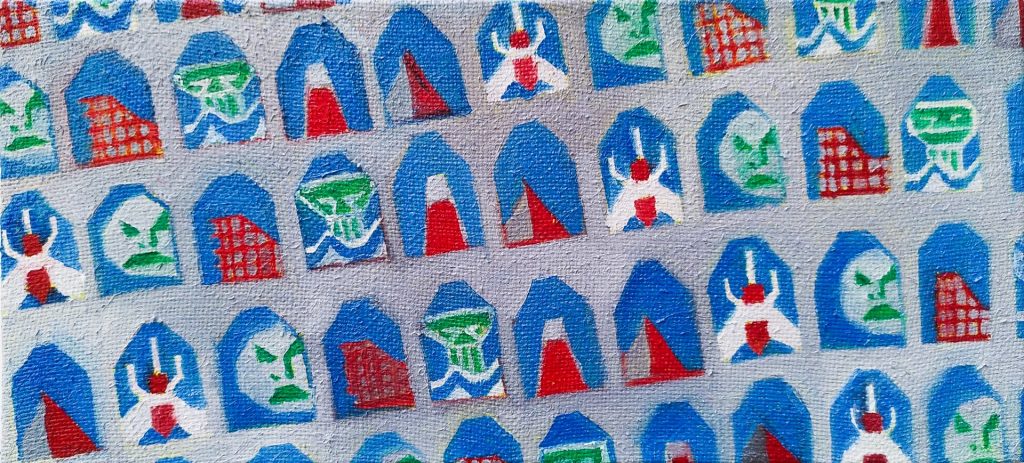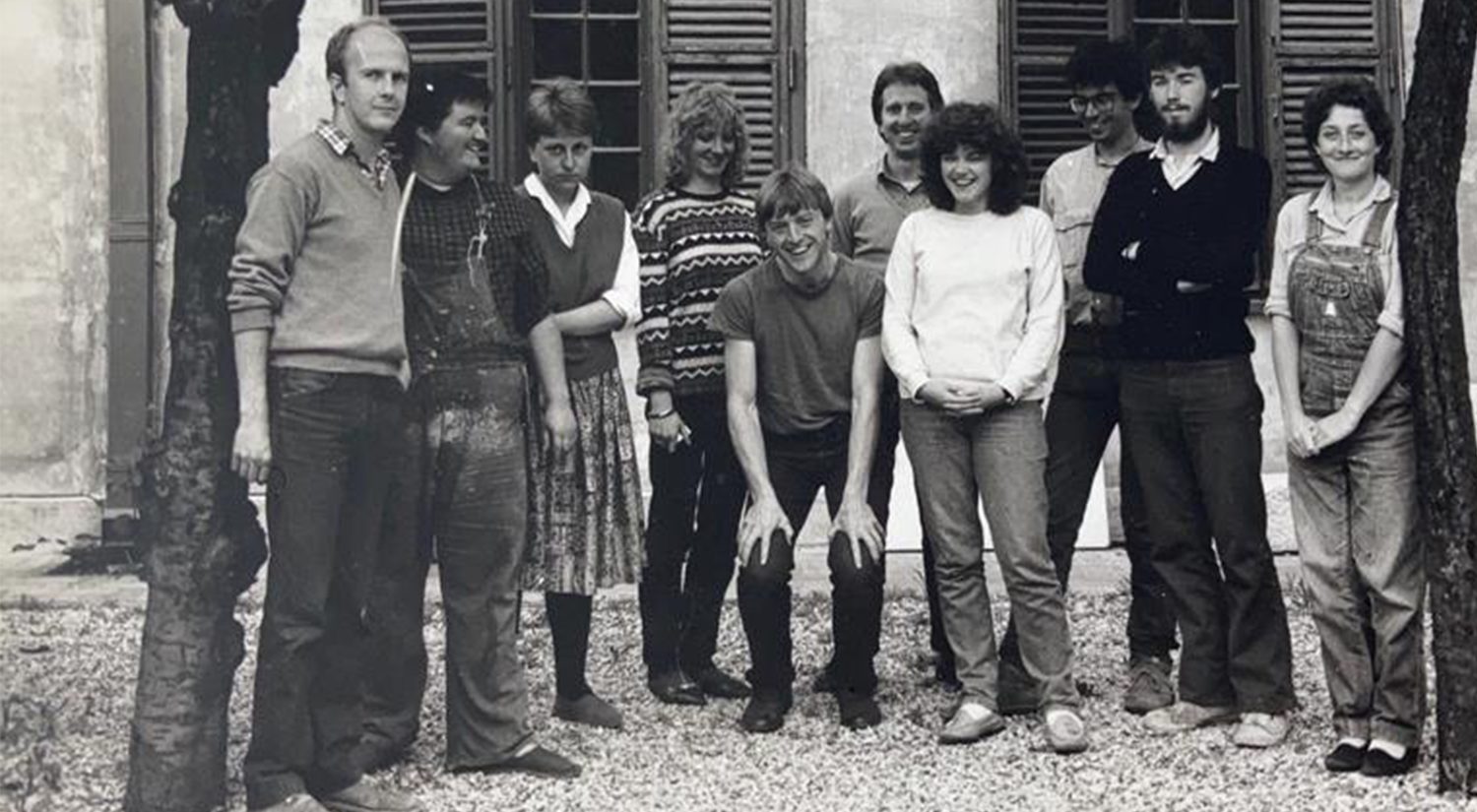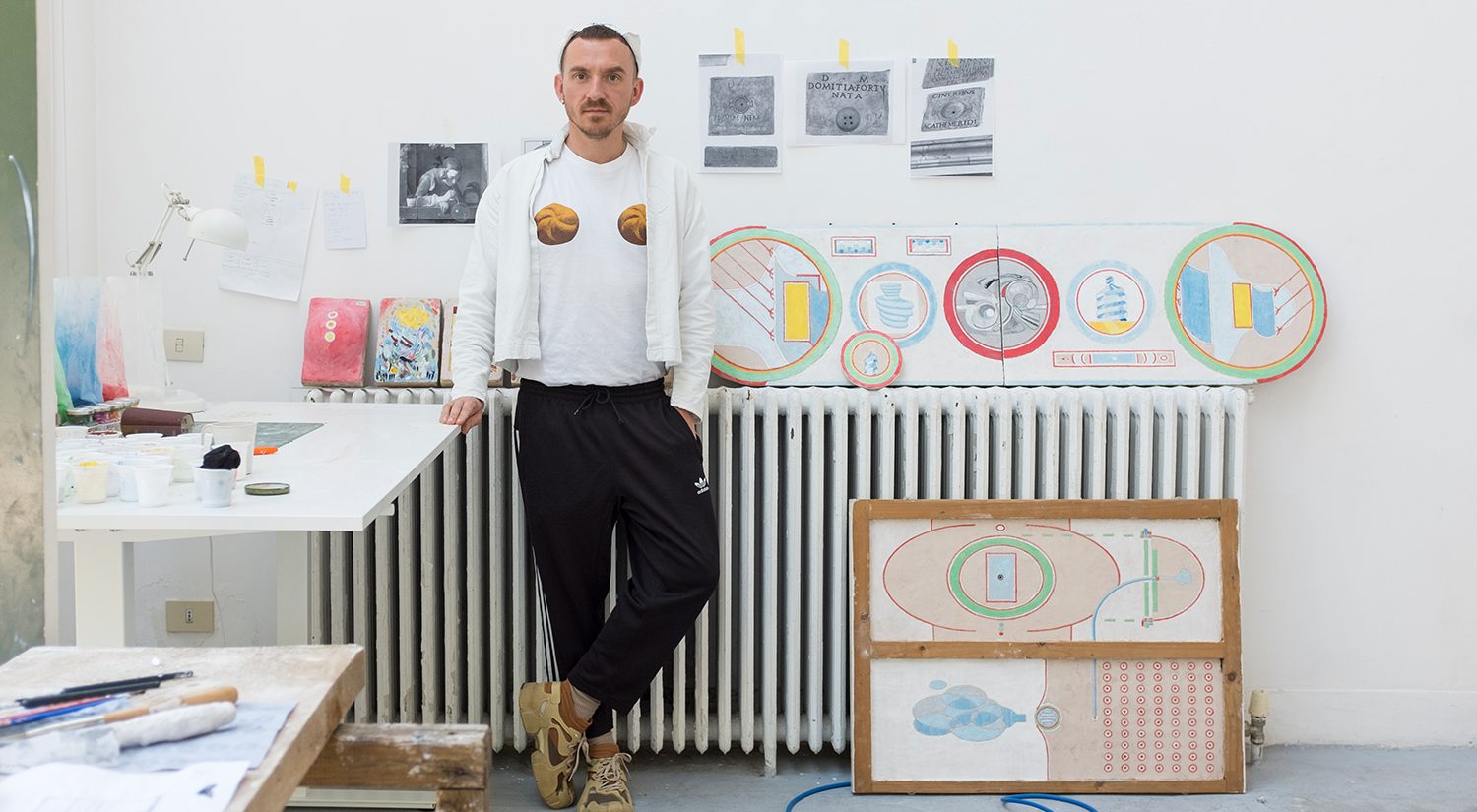An interview with Michael Coppelov, Abbey Fellow in Painting, in which he speaks about the work he has produced during his residency at the BSR from September – December 2023, ahead of the Winter Open Studios.
You recently went to Rovereto to study the figure of Fortunato Depero, one of the leading exponents of Futurism in Italy. In his Manifesto of the Futurist Reconstruction of the Universe (1915) he set himself the goal of creating an artistic practice that would involve every aspect of practical life. Is this idea of art challenging your own practice during your residency?
I am an artist whose work uses humour to investigate our interconnected world – with a particular focus on road and rail networks and how places are connected. I make 2D paintings on canvas and 3D paintings as wearable cardboard glasses designed to be worn in situ.
I became very interested in Fortunato Depero’s work when I first saw it in 2019 at the Barbican’s exhibition Into the Night: Cabarets and Clubs in Modern Art because of his cross-disciplinary approach and his use of playful symbols and humour throughout. In him, I found an artist using the same language as myself, whose work I could respond to.
In Rome, I have been given the opportunity for an in-depth study of his work, and that of the wider Futurists in order to explore this way of working. I began with a visit to Giacomo Balla’s casa, which I imagined to be serious and intense, oppressive and difficult to live in but my feelings were the opposite: I found a space that was light and playful and adorned with beautiful rugs and hand-crafted furniture, bespoke tiling and kitchenware.
I undertook a round trip starting at Giotto’s Scrovegni Chapel in Padua, before moving onto Fortunato Depero’s Casa in Rovereto, which revealed his coherent and playful use of repeated motifs across the whole spectrum of his work. The last stop was at the Palazzo Medici Riccardi in Florence, in order to see a Depero exhibition which further increased my knowledge of his work.
In the British School at Rome, my work has been evolving as a result of these interactions. I have been using drawing and design work to create a series of symbols which embody my feelings and experience of living in the city. I have spent time paring these down into ever simpler forms as a way of exploring clothing and textile design. Meanwhile, I have been pushing my 3D glasses further by making a whole head piece. The latter, as a way of thinking through Futurist-inspired ways of removing the artwork from the gallery and bringing it out into everyday life.

During your time in Rome you are paying attention to the design of seats in the metro trains and rethinking possible tapestry motifs. Where did this idea come from and how are you developing it?
As previously stated, I make work which celebrates the physical connections between places. In the recent past, I have created paintings about hiking trails which connect Mexico and Canada, books which encourage people to run around in the wilderness and glasses which celebrate German bus companies. So, naturally the first thing I wanted to do in Rome was to explore the city’s infrastructure and its Metro network. Compared to London and Glasgow, where the seats are patterned, I was disappointed to find out that the seating of the trains here is plain. London, for example, uses a fabric which incorporates a repeated design that reflects each line’s character.
In Rome, I began making a series of watercolour paintings for proposed fabric seat covers for the Metro, incorporating the famous sights of the city, such as tessellating Pantheons and Colosseums. However, I began to notice that as time passed and I developed a more personal experience of Rome, I became less interested in these famous landmarks and more interested in things that were becoming more meaningful to me. For example, at that time, I was being eaten alive in my studio by plagues of mosquitoes, so it was important that they were portrayed in the design. At the same time, I was enjoying trips to a local bakery where I had discovered Sicilian cassatina cakes, so I wanted them to become part of my vision too. Essentially, my designs were evolving into a much more personal and real connection to Rome and less of a cold and emotionally distant, tourist-guide view.

I was invited to take a painting of one of my recently-developed Roman seat patterns to a group crit at CASTRO Projects: an artist-run project space in Trastevere. The large group of local artists discussed my painting and gave me interesting feedback. I hence developed the work further: by abstracting the imagery, upping the personal and creating a work that is more open to interpretation.
The visits to see Depero’s work have also been useful. His use of a small range of colours, shapes and repeated motifs and the paring down of the artwork into the simplest of forms and colours has enabled me to think through my formation of three very basic motifs: one for each of Rome’s three Metro lines that somehow boils down my experience whilst also embodying this hugely complex city into the simplest of forms.











